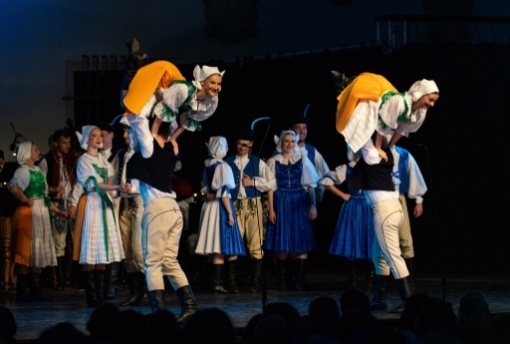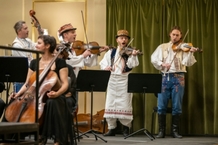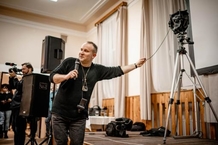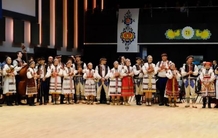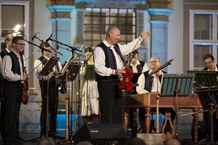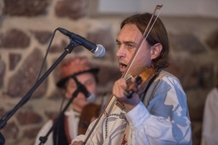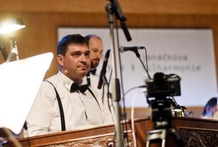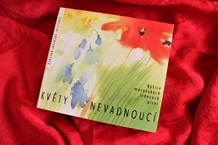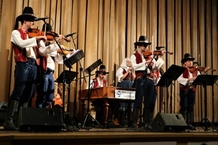Marie Hvozdecká
News
Brno’s Fašank Revelry
With Ash Wednesday, which this year fell on 14/2, ended for us the period of revelry linked to it – parades, feasts and other forms of entertainment. The four-week period of Lent has begun, culminating in the celebration of Easter. The last few days before Ash Wednesday are the time of masopust, fašank, vostatek and končiny. These are all Czech local names for traditional processions and costumed celebrations. The festivities have a very long tradition of celebrating the solstice, predating Christianity and reaching far back into antiquity. They take place in various forms throughout Europe. In South Moravia there are several places where the folk tradition of the celebration of fašank has become famous thanks to its specific form. The best known of these is the village of Strání, where for the whole weekend until Tuesday’s burial of basses a Festival of Masopust Traditions takes place. more
Feature articles
For the fourth year in a row, audiences could visit the courtyard of Špilberk Castle and enjoy the dance art of the Ondráš Military Art Ensemble from Brno in a series called Evenings with Ondráš. This year, on the two days of 15 and 16 June, those interested once again saw the best that the company currently has to offer. Moreover, the concerts were fundraisers, with the money raised going to the Military Solidarity Fund. I will take a look at the second, Friday evening, during which Ondráš invited his friends from the Mladina ensemble of Pilsen to the stage. more
The celebrations of the 100th anniversary of Brno’s Besední dům, which take place within its premises and elsewhere, have an interesting and distinguished dramaturgy that manages to transport the audience to the early days of this concert venue. Two concerts took place on 4 and 5 May and were entitled “Janáček” and “Horňácká muzika”. I took part in the first one; it was a truly momentous experience prepared by the Brno Philharmonic and Petr Mička’s Horňácká muzika. Friday’s repeat of the concert was broadcast by Czech Television. Both nights were sold out and standing tickets were even added to the sale. more
Naloučany is a small village on the Oslava River in the Vysočina region. The village has its own photographer, and his portraits of the village locals have found their way to the American Library of Congress and have become part of the largest collection of this medium since its beginnings. This is naturally a source of pride for nearly two hundred of the village’s inhabitants. That’s why they all joined forces to give their native photographer an event that would be remembered not only by them and by the photographer himself, but also by all the other visitors who took the trip through the snowy rolling landscape to the village’s community centre. more
Folklore enthusiasts from all over Moravia met in the reconstructed hall of the largest Czech Sokol Hall on Kounicova Street in Brno. The traditional seventy-first ball was organised by the Slovácký krúžek Brno Club on Saturday 21 January. Two associations with a deep First Republic tradition were thus connected, and it seemed that they had shared a natural common bond all that time. more
After a covid break, the streets of Brno were once again filled with costumes from various parts of Moravia as well as other European countries. On the first day of September, the International Folklore Festival Brno began. Like the vast majority of festivals and regular events that could not take place in the last two years, the IFF also had a break due to government measures. And that is why this year’s festival chose the telling subtitle “We Live”. This time BROLN provided the opening concert in the courtyard of the New Town Hall, and there were two special reasons for this. more
The abbey in old Brno where Gregor Johann Mendel worked until his death hides several beautiful areas behind its walls. One of them is the Paradise Court, which is entered through an inconspicuous entrance next to the Basilica of the Assumption. On Thursday 16 June, the stone walls of this ancient space hosted the opening concert of the Brno and its churches project. more
On this very day (19 May) an event will start in Valašské Meziříčí which all the dulcimer players from almost all over the world have been looking forward to for two years. It is the 14th International Dulcimer Festival, which has been held in this town every odd year since 1995. This year, it is sure to be rather modest due to the pandemic situation; the organizers are going to stream some of the concerts, while others will be broadcast on the Czech Radio stations Vltava and Brno. This year, Michal Grombiřík, a dulcimer player, became the first ever such musician admitted to the Jazz Music Interpretation Department of the Janáček Academy of Music and Performing Arts (JAMU). What is the path from a traditional folk song, through classical music to jazz music, and what exactly is Michal going to do at the aforementioned dulcimer festival? We covered all these topics in our conversation. more
More than twenty years ago, the Harafica cimbalom ensemble was founded at the Primary School of Arts in Uherské Hradiště. For most music fans, it is known for its unusual arrangements of folk songs, excellent performances of musicians, sold-out concerts, but also unusual fusions of genres. And it was about their latest cross-over project that I talked with the musical director and cimbalom player of Harafica music, Peter Gablas, from whose pen all the musical arrangements can be heard in it. It is their new album, which is called Harafica Symphonic. Connecting traditional folk music with the powerful sound of the Janáček Philharmonic Ostrava with the Brno conductor Robert Kružík. You can hear old texts from the collections of František Sušil, Janáček motifs and the singing of two interesting guests. more
The poetic title Květy nevadnoucí (Flowers Never Fading) hides the most recent publishing achievement of Jiří Plocek. This compilation CD celebrates a quarter of a century since the establishment of the Moravian folklore series in his GNOSIS BRNO publishing house, which released fourteen albums created between 1995 and 2005. And they are not just ordinary albums. Jiří Plocek's enthusiasm and feeling for song is indisputable, but there is much more coming from the recordings – for example, it is the enthusiasm of the singers themselves, which Jiří Plocek fuelled during the recording sessions, while letting them play and sing according to their own will and mood. I must also emphasise the choice of performers themselves. The names have really become iconic by now – František Okénka, Zdeněk Kašpar, Karel Rajmic, Vlasta Grycová, Jiřina Miklošková and many others. Unfortunately, some of them have already departed from this world. Others, which we hear on the album as gifted children, are already rising to become another generations of singers – which is the case of Tomáš Beníček. I'm intentionally mentioning the singers, but the album itself also has a high musical quality. However, all the songs are performed by exceptional performers. This also gives them uniqueness in the spirit of a living folk tradition. more
Let us hope that Sunday's concert to mark the fifteenth anniversary of the great music band of the Brno-based Valášek Children's Ethnographic Ensemble (Dětský národopisný soubor Valášek) will not be the last event that ever-changing government regulations will allow. And even if that, God forbid, was the case, it would be a dignified farewell. more






